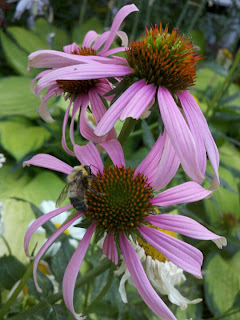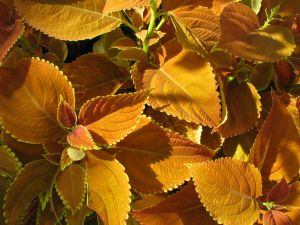I just didn't really care for them, though. My father adored them and planted them in front of the store every year. Perhaps if I caught more glimpses of butterflies on them like in the picture, I wouldn't mind as much.
A few years ago, I was shopping for seeds when I realized that zinnias had even more shapes. I am particularly drawn to the pinwheel ones.
Now that I know there are more varieties and colors, I tend to include them every year. I put them in a bed that has small peonies growing. I plant a mix of seeds of zinnias, sunflowers, cosmos and portulaca, for a variety of height and texture in color. And then I hope the birds don't eat all of the seeds before they get a chance to grow.
I have already purchased my seeds for this year. Now for the weather to get warm enough to start planting them....










































